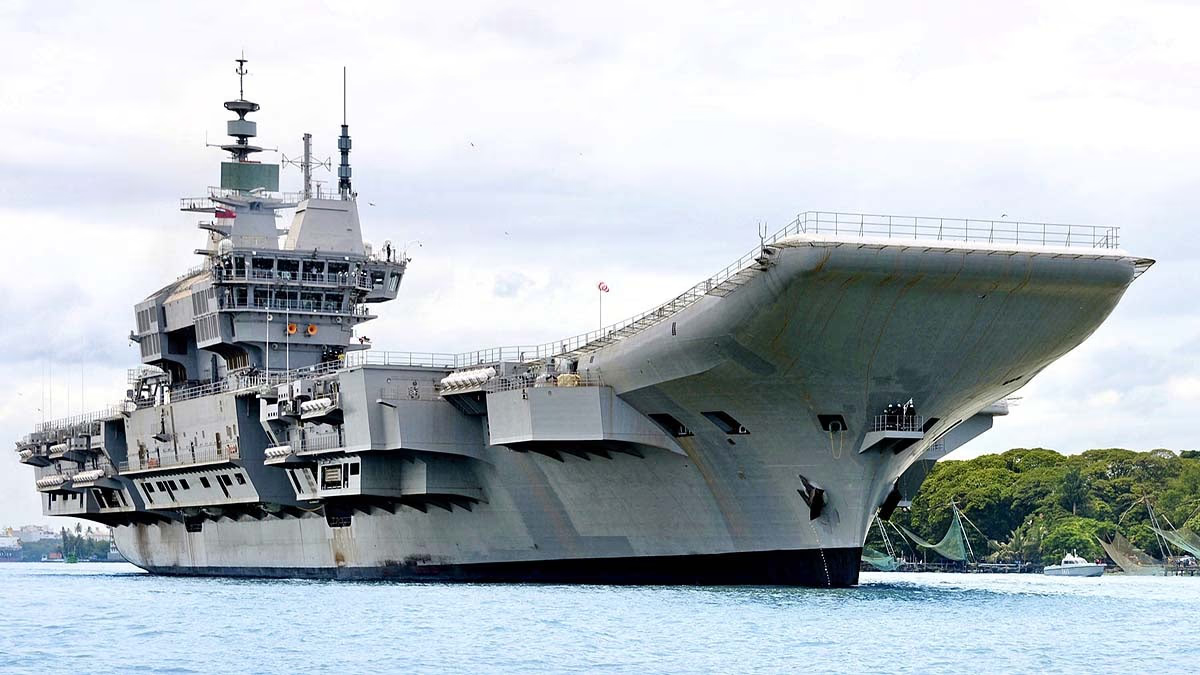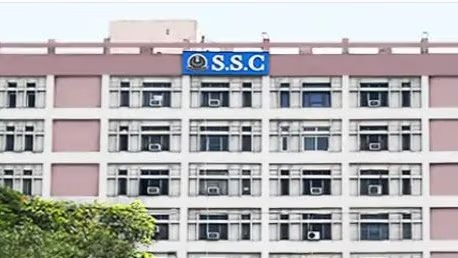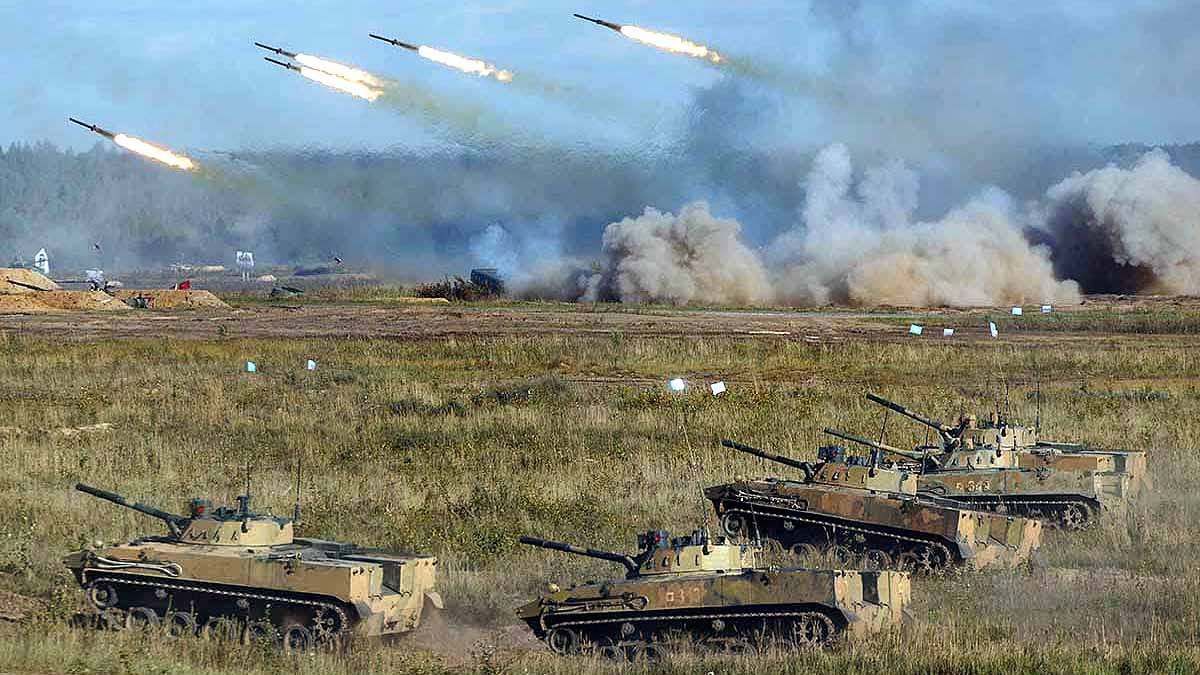India is gearing up to enhance its naval prowess with the development of its first nuclear-powered aircraft carrier, named INS Vishal. Scheduled under the Technology Perspective and Capability Roadmap 2025 (
), announced by the Ministry of Defense on August 6, 2025, this initiative positions India to effectively counteract regional challenges in the Indo-Pacific, particularly from China and Pakistan.
INS Vishal: A New Titan for India
Known as Indigenous Aircraft Carrier-3 (IAC-3), INS Vishal will be India's third aircraft carrier, constructed at Cochin Shipyard Limited and powered by nuclear energy. With a displacement of 65-75 thousand tons, a length of 300 meters, and a top speed of approximately 55 km/h, the vessel symbolizes robust maritime strength for the nation.
INS Vishal will have the capacity to carry 55 aircraft, including 40 fixed-wing fighters and 15 rotary-wing helicopters, embodying the Sanskrit meaning of 'Vishal'—immense. This will firmly place India alongside the United States and France as operators of nuclear-powered aircraft carriers.
Advantages of Nuclear Power
The nuclear-powered vessel offers myriad benefits ...
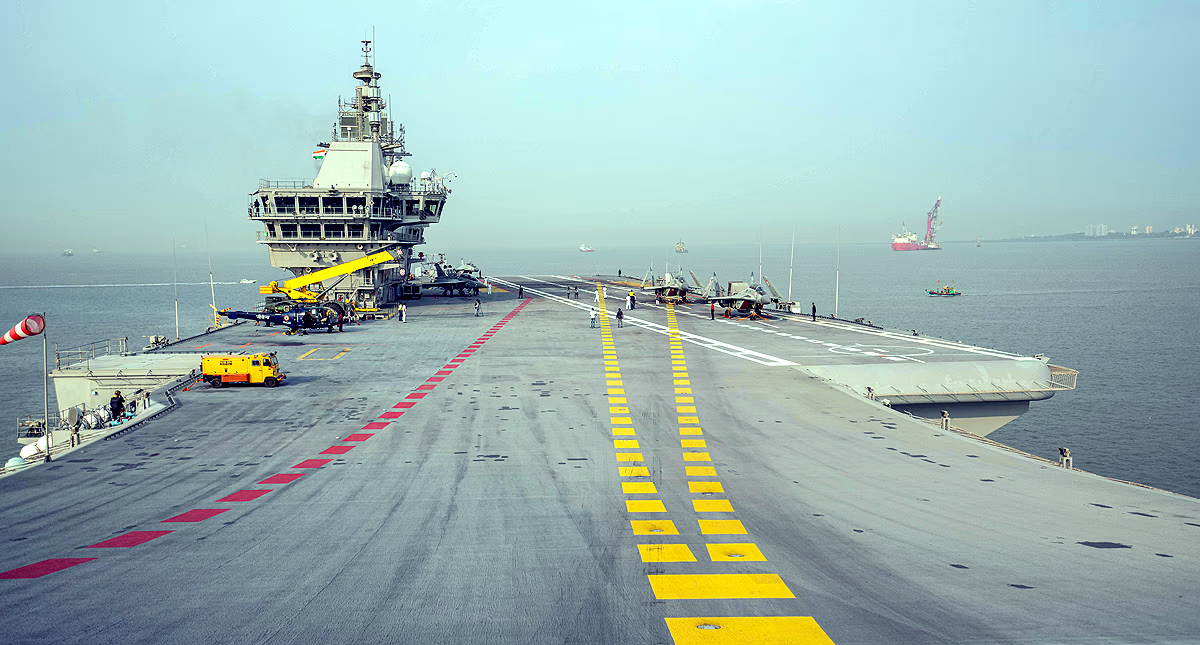
Source: aajtak
Extended sea presence: Capable of remaining at sea for months without refueling, significantly reducing logistical needs.
Enhanced power: The onboard nuclear reactors will generate 500-550 megawatts of electricity, powering sophisticated systems like the Electromagnetic Aircraft Launch System (EMALS), laser weapons, and advanced sensors.
Launching heavy aircraft: Capable of deploying heavy fighter jets, drones, and AEW&C (Airborne Early Warning and Control) aircraft.
Increased sorties: The nuclear power allows for more sorties and extended aerial coverage.
These advantages position INS Vishal as a decisive force enhancer for India's maritime defense capabilities, especially against challenges posed by China and Pakistan.
Technological Marvels of INS Vishal
As per TPCR-2025, INS Vishal will incorporate cutting-edge technologies ...
EMALS: This electromagnetic system will enable the easy launch of heavy aircraft, being indigenously developed by DRDO.
Automatic Landing System: Ensures safe recovery of aircraft.
Fresnel Optical Landing System: Aids pilots during landings.
Combat Management Software: Coordinates aircraft and provides strategic guidance during operations.
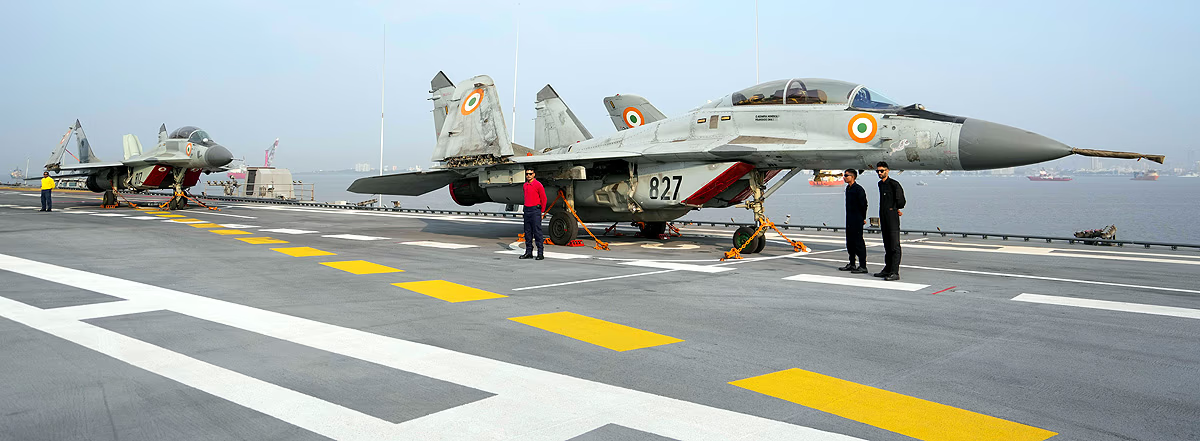
Source: aajtak
Airwing Composition
INS Vishal will boast a diverse and modern fleet...
Rafale-M: In April 2025, India finalized a purchase of 26 Rafale-Marine jets from France, valued at ₹63,000 crore, scheduled for deployment by 2030.
TEDBF: The Twin Engine Deck-Based Fighter is being developed by Hindustan Aeronautics Limited (HAL) for service by the 2030s.
LCA Navy: The naval version of Tejas, potentially serving training purposes.
Drones: Unmanned Combat Air Vehicles (UCAV) for high-risk missions.
Existing Indian Naval Strength
India currently operates two aircraft carriers...
INS Vikramaditya: Acquired from Russia and commissioned in 2013, it has undergone upgrades in 2020-22 and 2024.
INS Vikrant: India's first indigenously-built carrier, commissioned in 2022 with a capacity for 30 aircraft.
Both have participated in exercises such as Malabar with the U.S. and Varuna with France. However, their operations are limited by conventional fuel reliance.
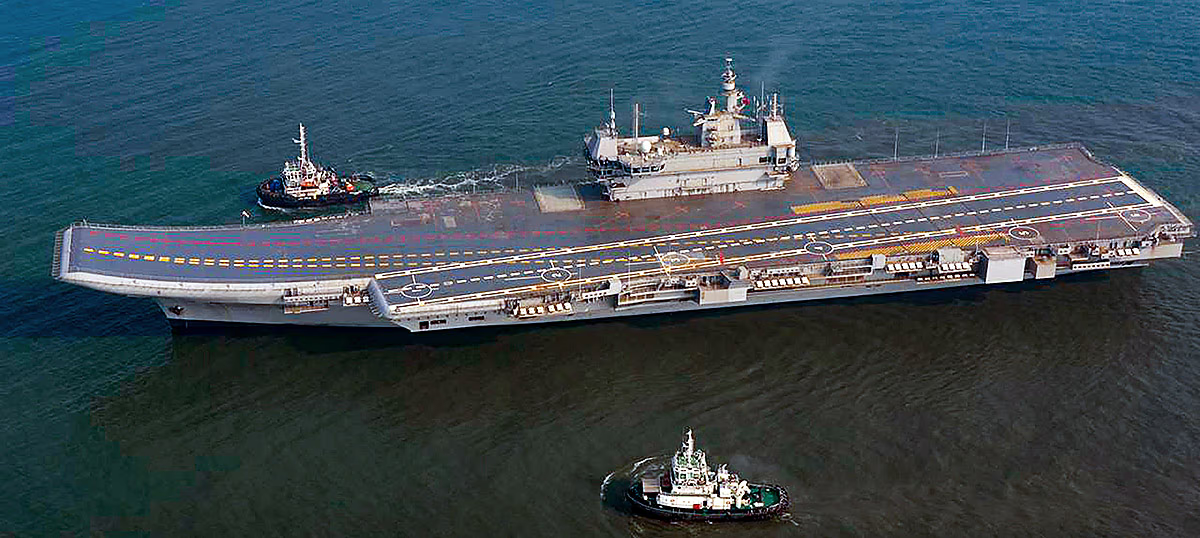
Source: aajtak
Need for INS Vishal
The rising maritime assertiveness of China and Pakistan has spurred India to develop INS Vishal...
Chinese capabilities: China operates two carriers, Liaoning and Shandong, with a third, Fujian, approaching readiness with EMALS.
Pakistani acquisitions: Pakistan's purchase of 8 Hangor-class submarines from China raises strategic concerns for India.
The need for three carriers: Ensures two active carriers for deployment while one undergoes maintenance, securing the Arabian Sea and Bay of Bengal.
Challenges Ahead
The journey to build INS Vishal is fraught with challenges...
Nuclear Reactor:
While India developed an 83 MW reactor for the Arihant submarine, INS Vishal requires 500-550 MW, demanding a 15-20 year development timeline and substantial investment.
Cost:
Estimated at $10-12 billion (around ₹80,000-1,00,000 crore), it constitutes a significant portion of India's defense budget.
Timeline:
Construction and testing are projected to span 12-15 years, targeting a late 2030s completion.
Alternative Plan:
Delays in reactor development may lead to employing gas turbine and electric propulsion systems, akin to partnerships with the UK and U.S.

Source: aajtak
Focus on Self-Reliance
TPCR-2025 emphasizes indigenization, reducing dependency on international suppliers like Russia, France, and the U.S.
DRDO and Bharat Electronics Limited (BEL) are spearheading EMALS development in India.
HAL is developing TEDBF and LCA Navy.
Cochin Shipyard is leading vessel construction, bolstering the Make in India initiative.
Strategic Significance
INS Vishal will cast India as a formidable naval power in the Indo-Pacific...
Power projection: Enhances India’s maritime outreach and secures trade routes.
Balancing regional dynamics: Strengthens India's stance against China and Pakistan.
Collaboration: Facilitates joint exercises and technical collaboration with nations like the U.S., France, and the UK.
